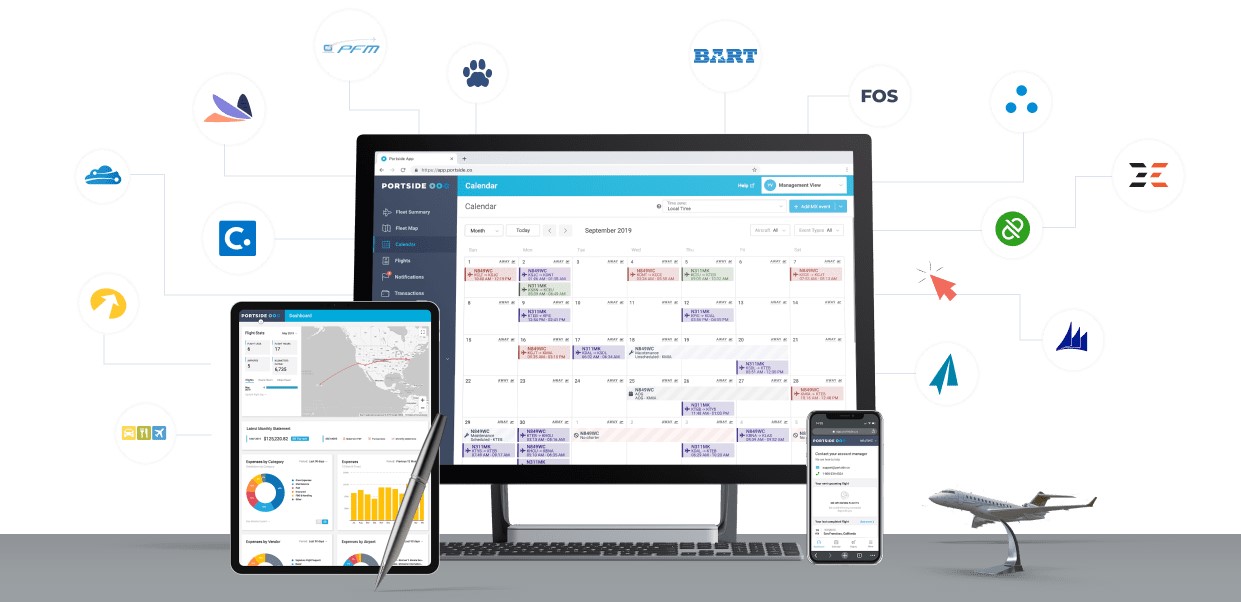Investors and politicians embracing a vision of an all-electric car future believe that path will significantly reduce global carbon dioxide emissions. That’s far from clear.
A growing body of research points to the likelihood that widespread replacement of conventional cars with EVs would likely have a relatively small impact on global emissions. And it’s even possible that the outcome would increase emissions.
The issue is not primarily about the emissions resulting from producing electricity. Instead, it’s what we know and don’t know about what happens before an EV is delivered to a customer, namely, the “embodied” emissions arising from the labyrinthine supply chains to obtain and process all the materials needed to fabricate batteries.
All products entail embodied emissions that are ‘hidden’ upstream in production processes, whether it’s a hamburger, a house, a smartphone, or a battery. To see the implications at the macro level, credit France’s High Climate Council for a study issued last year. The analysis found that France’s claim of achieving a national decline in carbon dioxide emissions was illusory. Emissions had in fact increased and were some 70% higher than reported once the embodied emissions inherent in the country’s imports were counted.
Embodied emissions can be devilishly difficult to accurately quantify, and nowhere are there more complexities and uncertainties than with EVs. While an EV self-evidently emits nothing while driving, about 80% of its total lifetime emissions arise from the combination of the embodied energy in fabricating the battery and then in ‘fabricating’ electricity to power the vehicle. The remaining comes from manufacturing the non-fuel parts of the car. That ratio is inverted for a conventional car where about 80% of lifecycle emissions come directly from fuel burned while driving, and the rest comes from the embodied energy to make the car and fabricate gasoline.
Virtually every feature of the fuel-cycle for conventional cars is well-understood and narrowly bounded, significantly monitored if not tightly regulated, and largely assumption-free. That’s not the case for EVs.
For example, one review of fifty academic studies found estimates for embodied emissions to fabricate a single EV battery ranged from a low of about eight tons to as high as 20 tons of CO2. Another recent technical analysis put the range at about four to 14 tons. The high end of those ranges is nearly as much CO2 as is produced by the lifetime of fuel burned by an efficient conventional car. Again, that’s before the EV is delivered to a customer and driven its first mile.
The uncertainties come from inherent—and likely unresolvable—variabilities in both the quantity and type of energy used in the battery fuel cycle with factors that depend on geography and process choices, many often proprietary. Analyses of the embodied energy show a range from two to six barrels of oil (in energy-equivalent terms) is used to fabricate a battery that can store the energy-equivalent of one gallon of gasoline. Thus, any calculation of embodied emissions for an EV battery is an estimate based on myriad assumptions. The fact is, no one can measure today’s or predict tomorrow’s EV carbon dioxide ‘mileage.’
As more dollars flood into government programs and climate-tech funds — 2021 is on track to blow past record 2020 climate-tech investments, with three firms alone, BlackRock, General Atlantic and TPG, each announcing new $4 to $5 billion cleantech funds — we’re overdue for paying serious attention to embodied emissions of EVs and other presumed technological panaceas for reducing carbon dioxide emissions. As we will see shortly, the attention may not reveal the expected outcomes.
Data (on) mining
The goal for any vehicle is to have the fuel system take as small a share of total weight as possible, leaving room for passengers or cargo. Lithium batteries, as revolutionary and Nobel-prize worthy as they are, still constitute a distant second place in the metric of merit for powering untethered machines: energy density.
The inherent energy density of lithium-class chemicals (i.e., not a battery cell, but the raw chemical) can be theoretically as high as about 700 watt-hours per kilogram (Wh/kg). While that’s roughly five-fold greater than the energetics of lead-acid battery chemistry, it’s still a small fraction of the 12,000 Wh/kg available in petroleum.
To achieve the same driving range as 60 pounds of gasoline, an EV battery weighs about 1,000 pounds. Not much of that gap is closed by the lower weight of an electric versus gasoline motor because the former is typically only about 200 pounds lighter than the latter.
Manufacturers offset some of a battery’s weight penalty by lightening the rest of the EV using more aluminum or carbon-fiber instead of steel. Unfortunately, those materials are respectively 300% and 600% more energy intensive per pound to produce than steel. Using a half ton of aluminum, common in many EVs, adds six tons of CO2 to the non-battery embodied emissions (a factor most analyses ignore.) But it’s with all the other elements, the ones needed to fabricate the battery itself, where the emissions accounting gets messy.
There are many combinations of elements possible for lithium battery chemistries. Choices are dictated by compromises to meet a battery’s mix of performance metrics: safety, density, charge rate, lifespan, etc. Depending on the specific formulation chosen, the embodied energy associated with the key battery chemicals themselves can vary by as much as 600%.
Consider the key elements in the widely used nickel-cobalt formulation. A typical 1,000-pound EV battery contains about 30 pounds of lithium, 60 pounds of cobalt, 130 pounds of nickel, 190 pounds of graphite, and 90 pounds of copper. (The balance of the weight is with steel, aluminum, and plastic.)
Uncertainties in the embodied energy begin with the ore grade, or share of rock that contains each target mineral. Ore grades can range from a few percent to as little as 0.1 percent depending on the mineral, the mine, and over time. Using today’s averages, the quantity of ore mined—necessarily using energy-intensive heavy equipment—for one single EV battery is about: 10 tons of lithium brines to get to the 30 pounds of lithium; 30 tons of ore to get 60 pounds of cobalt; 5 tons for the 130 pounds of nickel; 6 tons for the 90 pounds of copper; and about one ton of ore for the 190 pounds of graphite.

Aerial view of trucks loading brine from the evaporation pools of the new state-owned lithium extraction complex, in the southern zone of the Uyuni Salt Flat, Bolivia, on July 10, 2019. Image Credits: PABLO COZZAGLIO/AFP via Getty Images
Then, one must add to that tonnage the “over-burden,” the amount of earth that’s first removed in order to access the mineral-bearing ore. That quantity also varies widely, depending on ore type and geology, typically from about three to seven tons excavated to access one ton of ore. Putting all the factors together, fabricating a single half-ton EV battery can entail digging up and moving a total of about 250 tons of earth. After that, an aggregate total of roughly 50 tons of ore are transported and processed to separate out the targeted minerals.
Embodied energy is also impacted by a mine’s location, something that is in theory knowable today but is a guessing-game regarding the future. Remote mining sites typically involve more trucking and depend on more off-grid electricity, the latter commonly supplied by diesel generators. As it stands today, the mineral sector alone accounts for nearly 40% of global industrial energy use. And over one-half of the world’s batteries or the key battery chemicals are produced in Asia with its coal-dominated electric grids. Despite hopes for more factories in Europe and North America, every forecast sees Asia utterly dominating that supply chain for a long time.
The wide variability of power grids and batteries
Most analyses of EV emissions don’t ignore the embodied carbon debt in batteries. But that factor is typically, and simplistically, assigned a single value in order to calculate the variabilities arising from using EVs on different electric grids.
A recent analysis from the International Council on Clean Transportation (ICCT) is usefully illustrative. The ICCT, using a fixed carbon debt for a battery, focused on how the EV carbon footprint varies depending on where it’s driven in Europe. The calculations showed that, compared to a fuel-efficient conventional car, an EV’s lifecycle emissions can range from as much as 60% lower when driven in Norway or France, to about 25% lower when driven in the U.K., to tiny emissions reduction if driven in Germany. (Germany’s grid has roughly the same average carbon emissions per kilowatt-hour as does America’s.)
Their analysis used average grid emissions data that don’t necessarily represent emissions that occur when plugged in. But the specific time, not the average, determines the actual source of electricity used for ‘fueling.’ No such ambiguities attend to the location and time of gasoline use; it’s always the same anytime and anywhere on the planet. While the EV time factor has minimal variability in Norway and France where most electricity comes around the clock from hydro and nuclear respectively, it can vary wildly elsewhere from, say, 100% solar to 100% coal depending on the time of day, month and location.

The lignite-fired power station of Boxberg in Germany. The region of Lusatia in the east of Germany and its economic infrastructure is heavily dependent on the coal-fired power plants in Jaenschwalde, Schwarze Pumpe and Boxberg. Image Credits: Florian Gaertner/Photothek via Getty Images
Another recent ICCT analysis also used annualized grid averages and calculated that, compared to an average car, lifecycle emissions reductions range from about 25% for EVs in India to 70% in Europe. But, as with the similar exercise for intra-European comparisons, a single, fixed carbon debt for battery fabrication was assumed, and a low value at that.
There is good reason to consider the implications of the range of embodied battery emissions, rather than a single, low average value, because the IEA (amongst others) reports that most mineral production today entails processes at the higher end of emissions “intensity.” Adjusting the ICCT outcomes for that reality lowers the calculated lifecycle EV emissions savings to about 40% (instead of 60%) driving in Norway, to little or no reduction in the U.K. or the Netherlands, and about a 20% increase for EVs driven in Germany.
That’s not the end of the real-world uncertainties. The ICCT, again typical of many similar analyses, made calculations based on batteries 30% to 60% smaller than the size required to replicate the 300-mile range needed for widespread replacement of conventional cars. The larger batteries are common on high-end EVs today. Doubling the size of the battery leads to a straightforward doubling of its carbon debt which, in turn, dramatically erodes or eliminates lifecycle emissions savings in many, maybe most places.
Similarly problematic, one finds forecasts of future emissions savings often explicitly assume that the future battery supply chain will be located in the country where the EVs operate. One widely cited analysis assumed aluminum demand for U.S. EVs would be met by domestic smelters and powered mainly from hydro dams. While that may be theoretically possible, it doesn’t reflect reality. The United States, for example, produces just 6% of global aluminum. If one assumes instead the industrial processes are located in Asia, the calculated lifecycle emissions are 150% higher.
For EV carbon accounting, the problem is that there are no reporting mechanisms or standards even remotely equivalent to the transparency with which petroleum is obtained, refined, and consumed. The challenges in having accurate data are not lost on the researchers, even if those concerns don’t percolate up into executive summaries and media claims. In the technical literature one often finds cautionary statements such as a “greater understanding of the energy required to manufacture Li-ion battery cells is crucial for properly assessing the environmental implications of a rapidly increasing use of Li-ion batteries.” Or in another recent research paper: “Unfortunately, industry data for the rest of the battery materials remain meager to nonexistent, forcing LCA [lifecycle analysis] researchers to resort to engineering calculations or approximations to fill the data gaps.”
Those “data gaps” become chasms when it comes to expanding the world’s mineral supply chain to support the production of tens of millions of more EVs.
Turning up the volume
Perhaps the most important wildcard is the expected rise in energy costs associated with obtaining the necessary quantities of “energy transition minerals,” (ETMs) as the International Energy Agency (IEA) terms them.
Earlier this year, the agency issued a major report on the challenges of supplying ETMs to build batteries as well as solar and wind machines. The report reinforces what others have earlier pointed out. Compared to conventional cars, EVs require using, overall, about 500% more critical minerals per vehicle. Thus, the IEA concludes that current plans for EVs, along with plans for wind and solar, will require a 300% to 4,000% increase in global mine output for the necessary suite of key minerals.
The fact that an EV uses, for example, about 300 to 400% more copper than a conventional car has yet to impact global supply chain because EVs still account for less than 1% of the total global auto fleet. Producing EVs at scale, along with plans for grid batteries as well as for wind and solar machines, will push the “clean energy” sector up to consuming over half of all global copper (from today’s 20% level). For nickel and cobalt, to note two other relevant minerals, “transition” aspirations will push clean energy use of those two metals to 60% and 70%, respectively of global demand, up from a negligible share today.

Tesla Inc. vehicles in a parking lot after arriving at a port in Yokohama, Japan, on Monday, May 10, 2021. Image Credits: Toru Hanai/Bloomberg via Getty Images
To illustrate the ultimate scale of demand that EV mandates alone will place on mining, consider that a world with 500 million electric cars—which would still constitute under half of all vehicles—would require mining a quantity of energy minerals sufficient to build batteries for about 3 trillion smartphones. That’s equal to over 2,000 years of mining and production for the latter. For the record, that many EVs would eliminate only about 15% of world oil use.
Set aside the environmental, economic, and geopolitical implications of such a staggering expansion of global mining. The World Bank cautions about “a new suite of challenges for the sustainable development of minerals and resources.” Such an increase in mining has direct relevance for predictions about the future carbon intensity for minerals because acquiring raw materials already accounts for nearly one half of the life-cycle carbon dioxide emissions for EVs.
As the IEA report also observes, ETMs not only have a “high emissions intensity,” but trends show that the energy-use-per-pound mined has been rising because of long-standing declines in ore grades. If mineral demands accelerate, miners will necessarily chase ever lower grade ores, and increasingly in more remote locations. The IEA sees, for example, a 300% to 600% increase in emissions to produce each pound of lithium and nickel respectively.

Nickel mine, Thio, New Caledonia, French Overseas Collectivity, France. Image Credits: DeAgostini/Getty Images
Trends with copper are illustrative of the challenge. From 1930 to 1970, advances in the post-mining chemical processes led to a 30% drop in energy use to produce a ton of copper even though ore grades slowly declined. But those were one-time gains as optimized processes approached physics limits. Thus, during the four decades after 1970, as ore grade continued to decline, energy use per ton of copper increased, and returned to the same level as in 1930. That will be the pattern for the near future as ore grades continue to decline for other minerals.
Nonetheless, the IEA, like others, uses today’s putative average supply-chain emissions intensity to assert that EVs in the future will reduce emissions. But the data in the IEA’s own report point to rising embodied emissions for ETMs. Add to this the implications of far more solar and wind construction, which the IEA notes require 500% to 700% more minerals compared to building a natural gas power plant, and we’ll see even more pressure on the mining supply chain — which, in the commodity world, points to a dramatic rise in prices.
If the EV share of vehicles rises from today’s less than 1% and begins to approach a 10% share, the resource experts at Wood Mackenzie see untenable material demands: “Unless battery technology can be developed, tested, commercialised, manufactured and integrated into EVs and their supply chains faster than ever before, it will be impossible for many EV targets and ICE (internal combustion engine) bans to be achieved – posing issues for current EV adoption rate projections.”
There’s no evidence of capabilities to accelerate industry-class chemical development and manufacturing, or mining, in the short time-periods common in policy aspirations. Nearly three decades passed after the discovery of lithium battery chemistry before the first Tesla sedan.
Chasing carbon efficiencies in the battery supply chains
There are, of course, ways to ameliorate some of the factors that are dragging the world toward a future with increasing EV supply-chain emissions: better battery chemistry (reducing materials needed per kilowatt-hour of stored energy), more efficient chemical processes, electrifying mining equipment, and recycling. All of these are often offered as “inevitable” or “necessary” solutions. But none can have a significant impact in the time frames contemplated for rapid EV expansion.
Even though popular news stories frequently claim some “breakthrough,” there are no commercially viable alternative battery chemistries that significantly change the order-of-magnitude of the physical materials needed per electric-vehicle-mile. In most cases, changing chemistry formulations merely shifts burdens.
For example, reducing the use of cobalt is generally achieved by increasing nickel content. As for chemistries that eliminate the use of energetic atoms of, say, carbon or nickel, using instead, for example, more prosaic and low-energy-intensity elements like iron (e.g., the lithium-iron-phosphate battery), such formulations have lower energy density. The latter means a bigger, heavier battery is needed to maintain vehicle range. Still, it is reasonable to imagine the eventual discovery of a foundationally superior classes of battery chemistries. But once validated, it then takes many years to safely scale-up industrial chemical systems. Batteries put into cars today, and for the near future, will necessarily use technologies available now and not theoretically available someday.
Then there’s the prospect for improving the efficiency of the various chemical processes used in the mineral refining and conversion processes. Improvements there are inevitable, in no small part because that’s what engineers always do, and in the digital era they will more often find success. But there are no known “step function” changes on the horizon in the well-trod field of physical chemistry where processes already operate near physics limits. Put differently, lithium batteries are now well past the early stages where one sees rapid improvements in process (and cost) efficiencies and have entered the stage of incremental gains.
As for electrifying mining trucks and equipment, Caterpillar, Deere and Case (and others) all have such projects, and even a few production machines for sale. Promising designs are on the horizon for a few specific applications, but batteries are not up to the 24×7 performance demands to power heavy equipment in most uses. Moreover, the turnover rate in mining and industrial equipment is measured in decades. Mines will use a lot of oil-fired equipment for a very long time.
Finally, there’s recycling, commonly proposed to mitigate new demands. Even if all batteries were entirely recycled, it couldn’t come close to meeting the enormous increase in demand that will arise from the proposed (or mandated) growth path for EVs. In any case, there are unresolved technical challenges regarding the efficacy and economics of recycling critical minerals from complex machines, especially batteries. While one might imagine someday having automated recycling capabilities, nothing like that exists now. And given the variety of present and future battery designs, there’s no clear path to such capabilities in the timeframes policymakers and EV proponents have in mind.
Legal chaos and EV emissions credits
The unavoidable fact is that there are so many assumptions, guesses, and ambiguities that any claims of EV emissions reductions will be subject to manipulation if not fraud. Much of the necessary data may never be collectable in any normal regulatory fashion given the technical uncertainties, the variety and opacity of geographic factors, as well as the proprietary nature of many of the processes. Even so, the Securities and Exchange Commission is apparently considering such disclosure requirements. The uncertainties in the EV ecosystem could lead to legal havoc if European and U.S. regulators enshrine “green disclosures” in legally binding ways, or enforce “responsible” ESG metrics regarding carbon dioxide emissions.
For policymakers eager to reduce automotive oil use, engineers have already invented an easier and more certain way to achieve that goal while awaiting revolutions in battery chemistry and mining. Commercially viable combustion engines already exist that can cut fuel use by as much as 50%. Capturing just half that potential by providing incentives for consumers to purchase more efficient engines would be cheaper, faster—and transparently verifiable—than adding 300 million EVs to the world’s roads.




